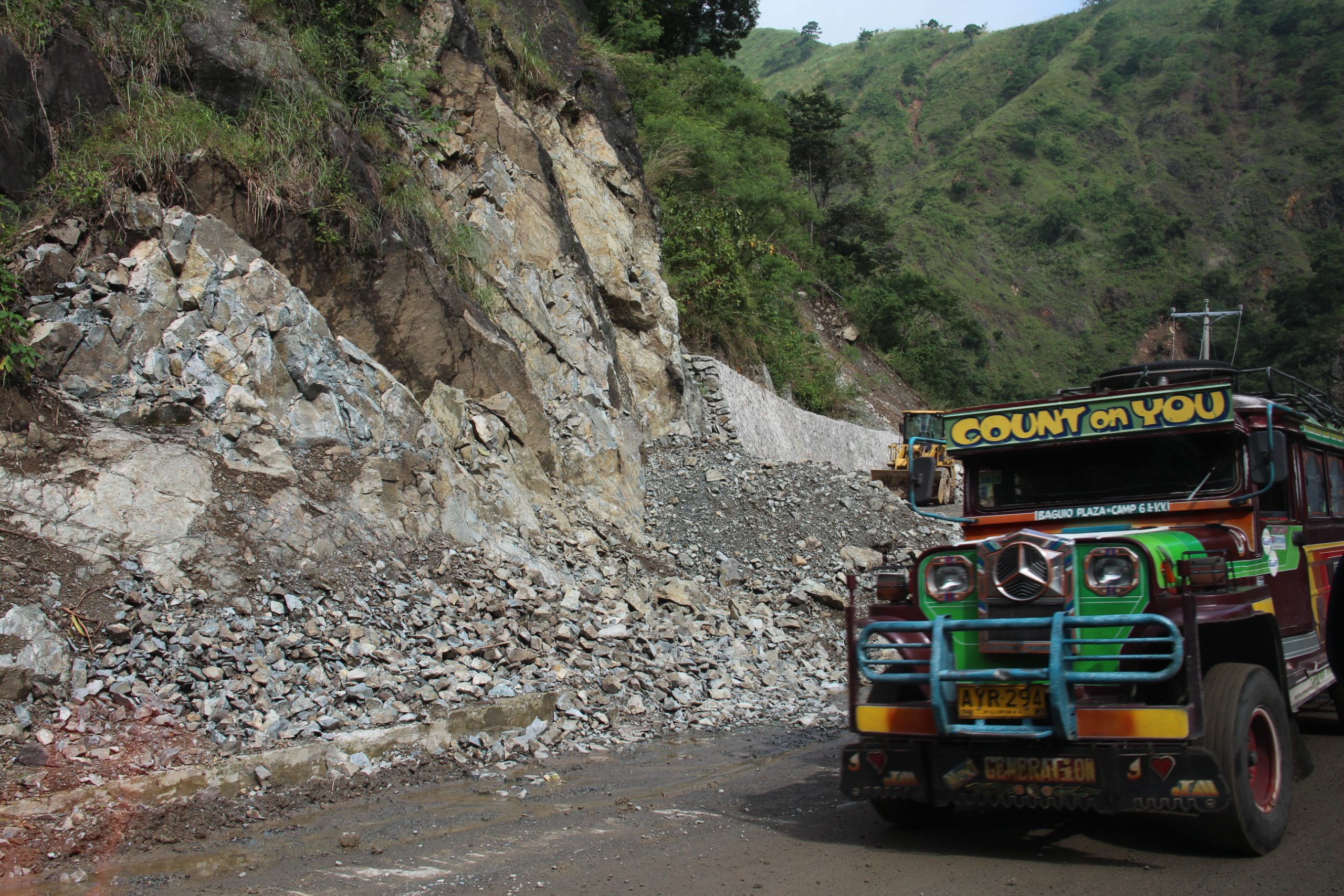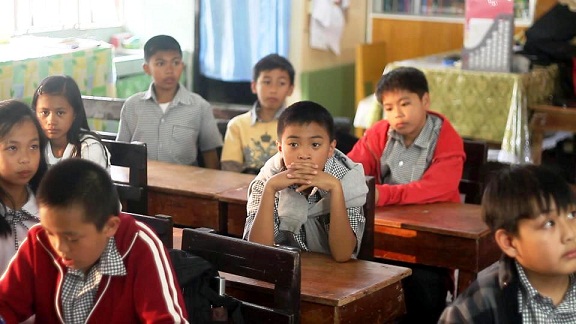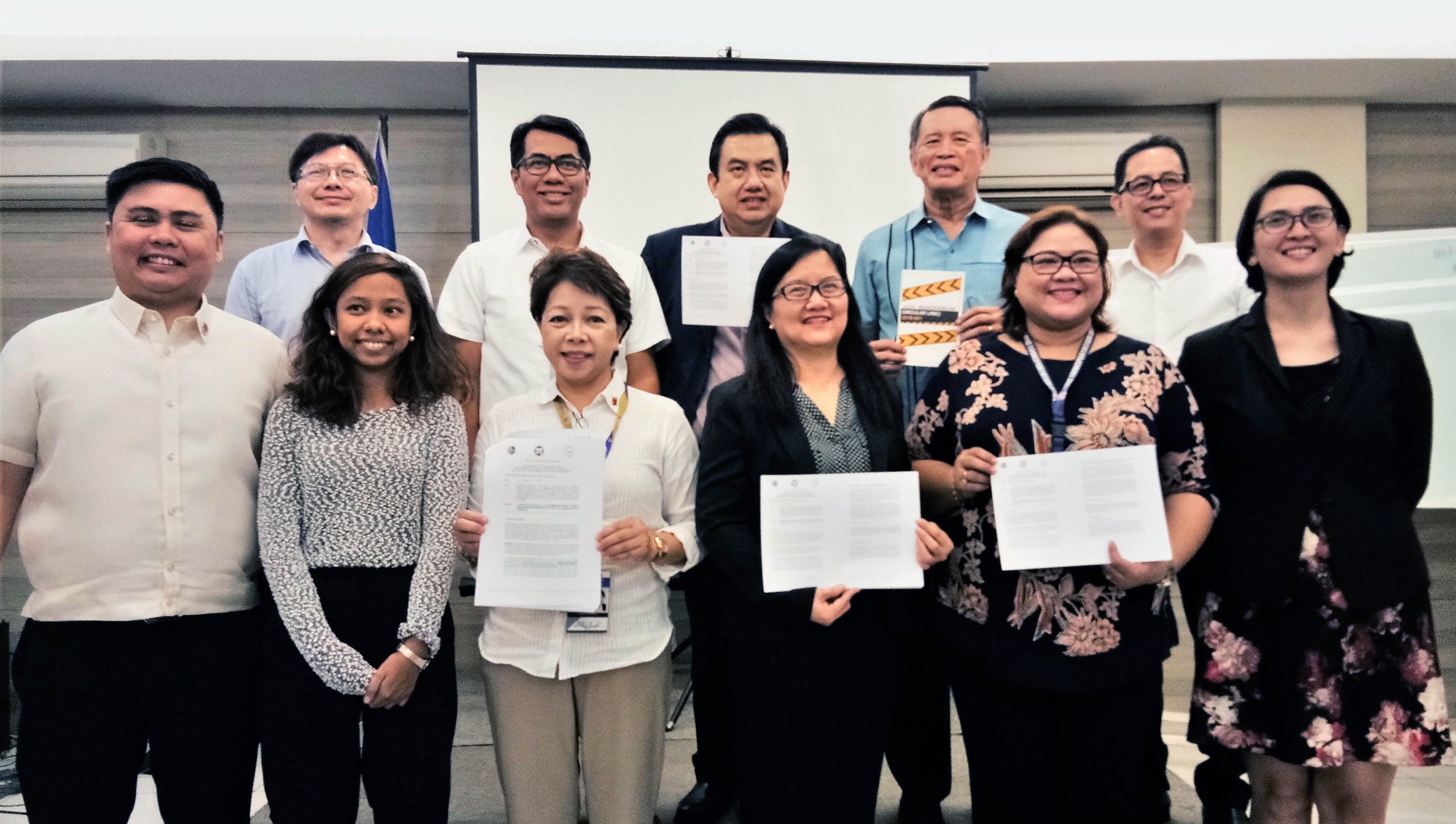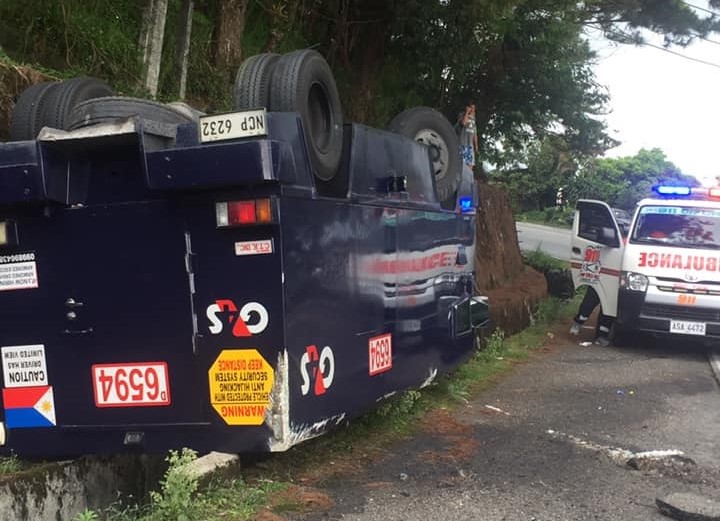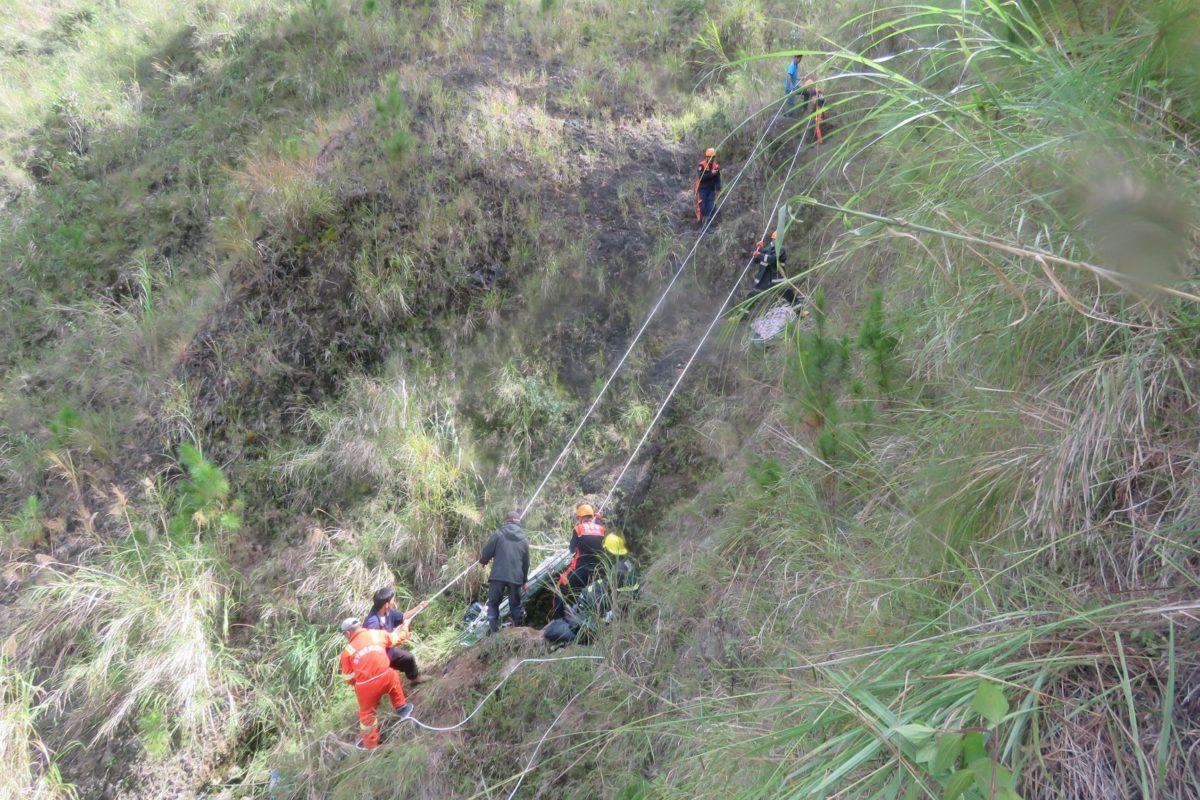It was after the July 1990 earthquake that Kennon road was last rehabilitated, after a series of landslides hit the area, endangering residents and motorists.
Almost three decades later, the 33-km road, riddled with 21 critical sections, is again in need of massive rehabilitation, forcing its closure anew.
The closure has been done as a precautionary measure under the threat of land and rockslides caused by heavy monsoon rains. Residents are urged to take precaution while traversing the stretch daily.
Engineer Arnold Dacwag of the Department of Public Works and Highways (DPWH) Planning and Design Department said total rehabilitation will cost almost P3.7 billion.
History of the road leading to the city
In the 1900’s thousands of workers under the leadership of US Army Major Lymann Kennon toiled to build the road. The scenic road pays tribute to the military officer who took charge of the improvements on the road, which was completed in 1905 at a cost of nearly two million US dollars.
“This in itself was a monumental task, for the road crew was composed of men from 46 nations who spoke many languages, adhered to a variety of religions,” said American Doctor Robert Reed who authored the book ‘City of Pines, the origins of Baguio as colonial Hill Station and Regional capital’.
Back then, the road was lauded for its economic and social significance as it enabled movement of people and direct transportation of goods to the city from the lowlands. A little known fact but inscribed in history books, the construction of the road claimed hundreds of lives – men who died of disease or who perished in accidents.
The state of the road today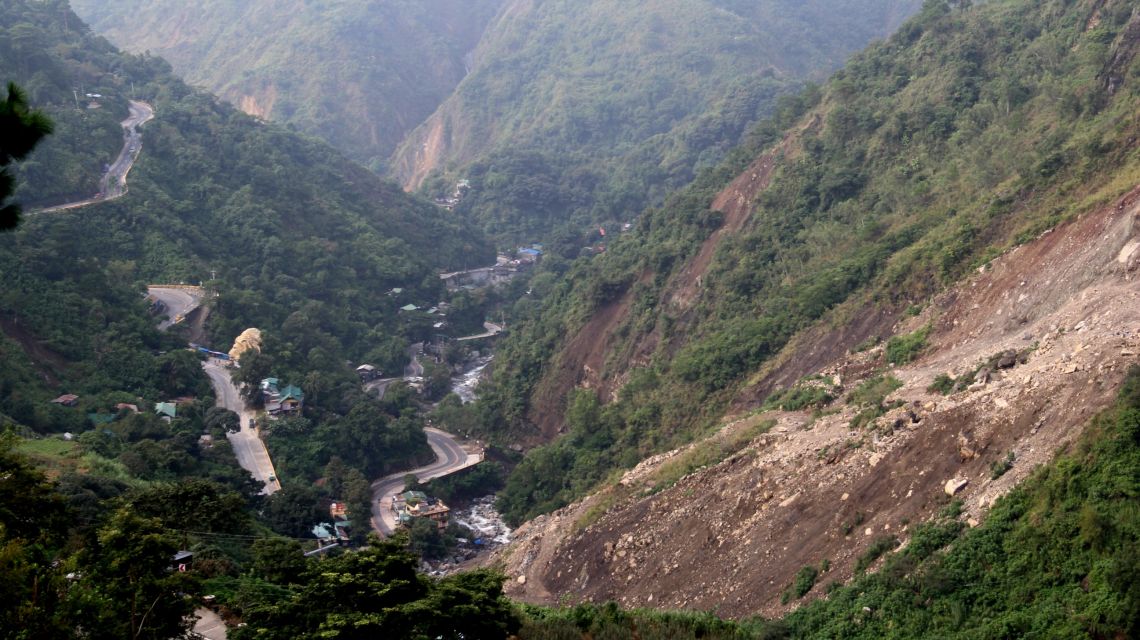
The 34 kilometer stretch of Kennon Road, a major highway for motorists from the lowland areas going to Baguio City and provinces in the Cordillera region. Photo by Lauren Alimondo.
In 2019, about 10,000 people whose homes are situated along the historic road — barangays Camp 6, Camp 5, Camp 4, Tabaan Sur, Ansagan and Twin peaks – have to contend with soil erosion, landslides or falling boulders that block the road. All these affect their daily lives and lielihoods.
Romy Salinas, Barangay Captain of Camp 4, 5 and 6 along Kennon, says any road closure affects the ‘umili’ – residents, students, farmers and even business establishments – because it disturbs their regular activities, including the transport of goods.
Despite its condition, motorists still prefer Kennon due to short travel time compared to major roads going to Baguio City, according to DPWH-Benguet First District Engineer Ireneo Gallato.
Traffic figures “show that they [motorists] still prefer Kennon Road.” The other routes to Baguio City are through Marcos Highway and Naguilian Road.
During the temporary opening of the road during the February Philippine Military Academy Alumni Homecoming there were 5,897 vehicles that traversed Kennon for five days, or an average of 1,179 vehicles a day. During the two–week Baguio Flower Festival, a total of 15,583 vehicles passed the road, averaging 1,416 cars day.
Saving Kennon road
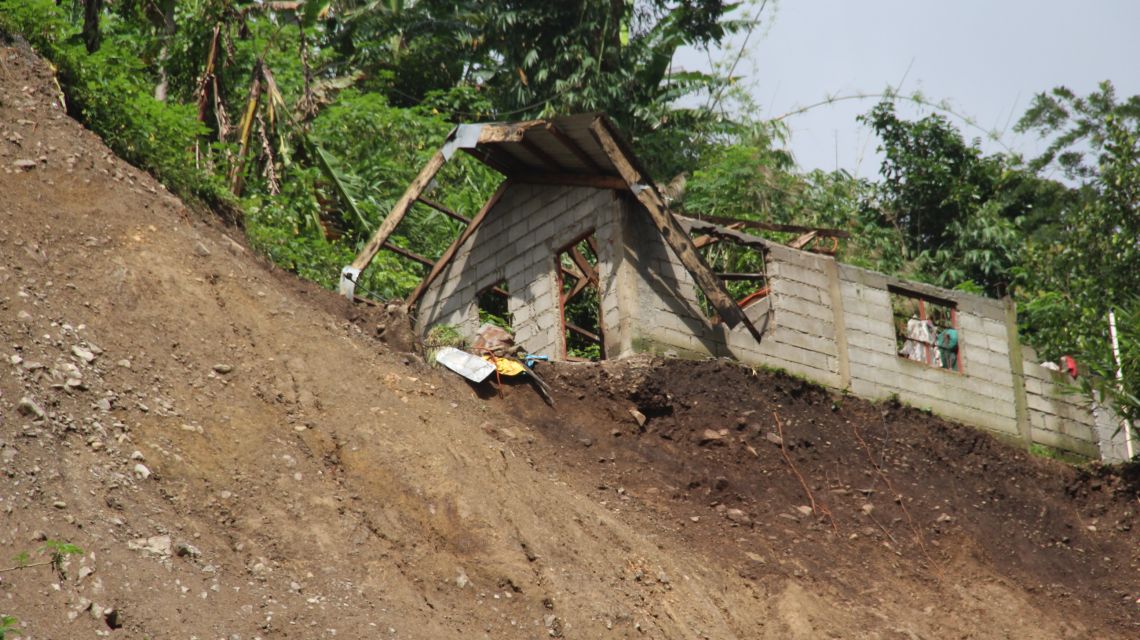
An unfinished house on a sloping hill.
DPWH-Cordillera Administrative Region Director Tiburcio Canlas suggests the removal of houses and other structures to prevent further habitation in the landslide-prone areas along Kennon.
He says DPWH-CAR also has initial plans to construct a 19-kilometer tunnel and rock sheds at critical sections, while rock netting, and catch dams or any combination of structures are being eyed in less critical sections.
Canlas said construction and repair work could cost billions of pesos.
The director also said the number of critical sections can increase “especially if we could not implement the right interventions as soon as possible.”
All efforts show that the government is moving to save the historic road with the zeal and passion of US Army Major Lymann Kennon.
This story, first published in the SunStar Baguio, was produced under the Road Safety Journalism Fellowship carried out by VERA Files and the World Health Organization under the Bloomberg Initiative for Global Road Safety.
